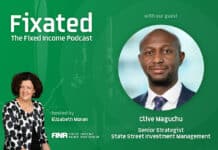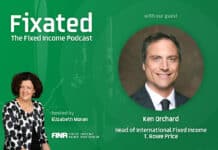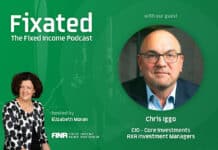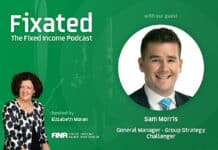
Stubborn inflation, higher interest rates, and slower economic growth point to a murky near-term outlook
T. Rowe Price has released its outlook for global financial markets in the second half of 2023 which suggests a reluctantly bearish view for the short term, with more room for optimism over the longer term.
The resilience of many world economies is being tested, as the effects of a steep, global interest rate hiking cycle and a shift to quantitative tightening are still being felt. Labor markets remain strong and are an important signal for investors to watch as any softening could increase the risk of a recession.
Although equity markets have delivered gains in the first half of 2023, earnings estimates may still be too high for a weakening economy, putting further pressure on equity valuations. Bonds, which suffered in 2022 alongside stocks, present potentially attractive opportunities in high yield, selective sovereign bonds and local currency debt in certain emerging markets.
Arif Husain, Head of International Fixed Income and Chief Investment Officer
“I am bearish because the risks are substantial, but I am also reluctant because excessive pessimism can lead investors to overlook opportunities and miss potential market recoveries.”
Also read: Is The Tide Turning For Global Fixed Income?
“I think some financial indicators also could be sending misleading signals about the near‑term direction of central bank policy rates. The market is trying to reconcile two very different scenarios – one where the U.S. economy remains fairly strong and the Fed doesn’t cut rates, and one where the Fed has to cut by several percentage points. The Fed and other central banks in developed markets will lower rates eventually, but the timing is tricky. Rates are likely to remain higher for longer. This could mean an aggressive portfolio shift into longer‑term bonds appears premature. Some emerging markets may be on the verge of rate cuts, but they are only attractive on a very selective basis.”
“Japan, as a last anchor of quantitative easing, could be about to give way. If the Bank of Japan allows yields to rise, Japanese investors who control the world’s largest pool of financial wealth could start bringing their wealth back home, delivering a significant shock to markets outside Japan. This could end up being a lot more important for markets than whether the Fed hikes or cuts rates at its next meeting.”
Sébastien Page, Head of Global Multi-Asset and Chief Investment Officer
“Many economic indicators are flashing red but lingering distortions from the COVID pandemic make it hard to distinguish the signal from the noise. Stock valuations aren’t broadly attractive right now, but opportunities exist in some asset classes. U.S. small-cap stocks, for example, are trading at significant discounts to their historical averages and priced like it’s 2008. However, since smaller companies historically have been more vulnerable in economic downturns, it takes skilled security selection to help avoid those with weak balance sheets and high cyclical earnings exposure.”
Thomas Poullaouec, Head of Multi-Asset Solutions, APAC and Chair of the Asian Investment Committee
“The Asian economies are at a different stage of their business cycles compared to the rest of the World. The recovery post COVID is still in its early stage and has not fully played out, with the recovery in regional tourism still underway, for example. Inflation is not as big of a concern as elsewhere, which allows selective Asian central banks to ease policies earlier than in the major developed economies. This tells me that it’s too early to give up on Asia.”
“Finding opportunities in Asia requires a new playbook for a few reasons. First, China’s service-led recovery will unfold differently compared to previous infrastructure-led recoveries. Second, geopolitical tensions are changing supply chain models. Third, economic momentum is decoupling. For the second half of the year, we maintain an overweight position in Asian equities and bonds, leveraging our active research platform to selectively pick the sectors and companies that can best navigate this changing landscape.”
INVESTMENT IDEAS
- Maintain flexibility and keep “dry powder” – Global economies have been resilient but are not yet out of the woods. With short‑term yields at attractive levels and economic uncertainty high, it makes sense to consider maintaining healthy cash balances for now and being ready to use the proceeds when clearer signals on inflation and monetary policies arise.
- Take advantage of attractive yields – Bonds may not be a good source of capital appreciation in 2023 but do provide yield. Equity upside may be limited by an uncertain economic landscape, so high yield bonds and emerging market bonds may offer better return opportunities.
This is an excerpt from the global 2023 Mid-Year Market Outlook report from T. Rowe Price and related comments from senior T. Rowe Price investment experts.

































